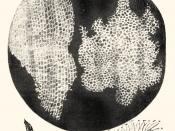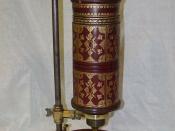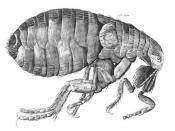ROBERT HOOKE
Robert Hooke was born on July 18, 1635, in Freshwater, on Wight Island. His father was a minister who was his home-school teacher. He was an art Apprentice while being taught at home also. When he was thirteen years old Robert attended Westminster School, and later Oxford where some of the best scientists in England were working. Robert Hooke impressed them with his skills at designing and building equipments. He soon became an assistant to Robert Boyle, a chemist. In 1662 Hooke was named Curator of Experiments of London's Royal Society which meant that he was responsible for demonstrating new experiments at the Society's weekly meetings. After that he became a professor of Geometry at Gresham College in London. He died on March 3, 1703.
Robert Hooke's book Micrographia played a big part in his life and studies. Micrographia was a perfect, detailed record of his observations, with great drawings, that he drew.
It was a best-seller of its day. In addition to the book he invented the compound microscope which was one of the best microscopes of that time. He used it in his presentations at the Royal Society's meetings, observing organisms various like insects, sponges, bryozoans, foraminifera, and bird feathers. His most famous microscopical observation was his study of thin slices of cork. In his book he wrote about this particular study as:
. . . I could exceedingly, plainly perceive it to be all perforated and porous, much like a Honey-comb, but that the pores of it were not regular. . . . these pores, or cells . . . were indeed the first microscopical pores I ever saw, and perhaps, that were ever seen, for I had not met with any Writer or Person, that had made any mention of them before this.



Biography of Robert Hooke
The essay itself is good but you had a very good intro but by the end you conclussion was very weak. There were also some sentenves in your body paragraphs that didnt make much sense and/or had nothing to do with it.
1 out of 2 people found this comment useful.